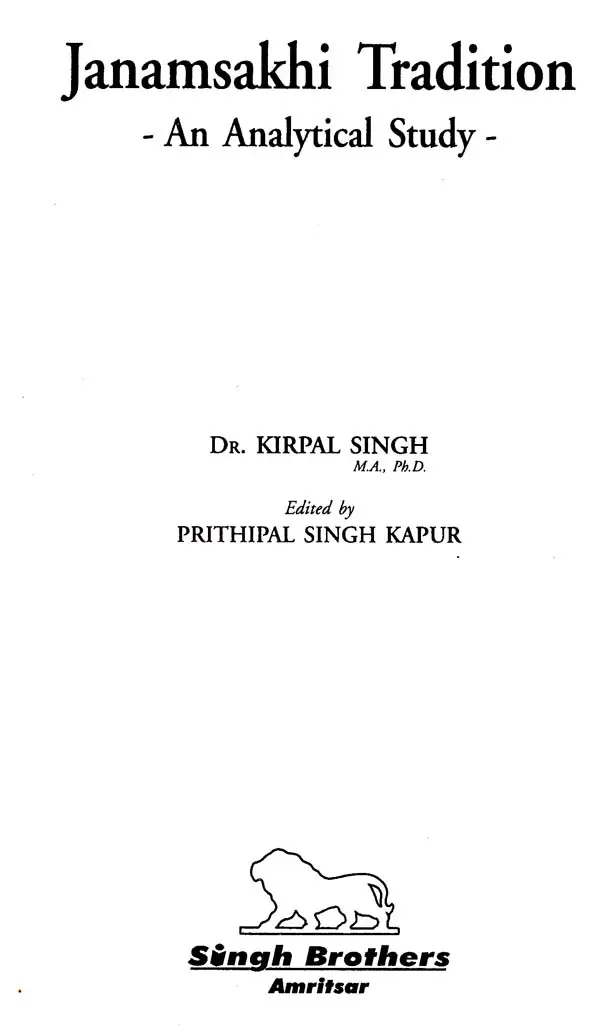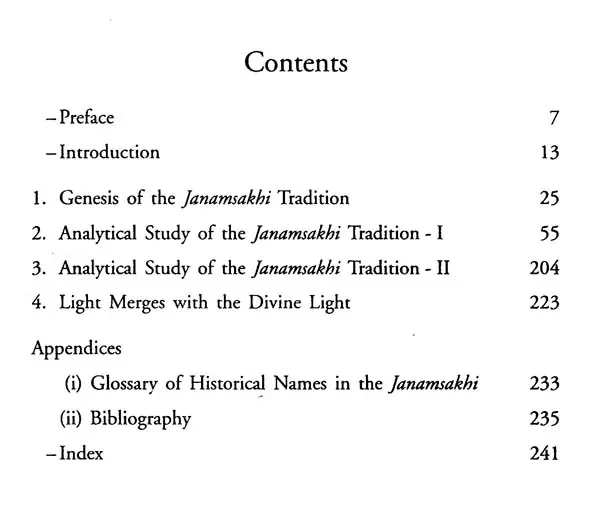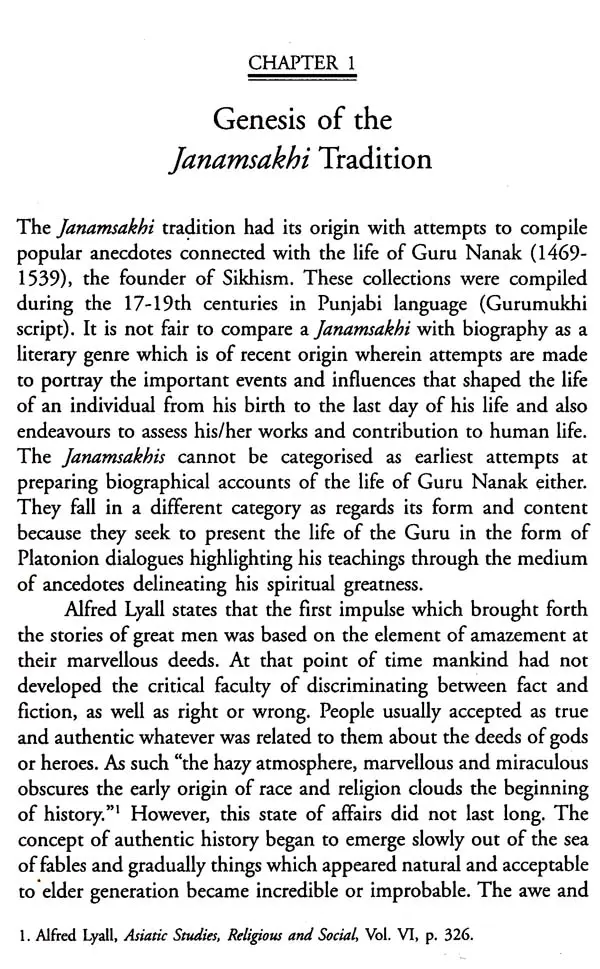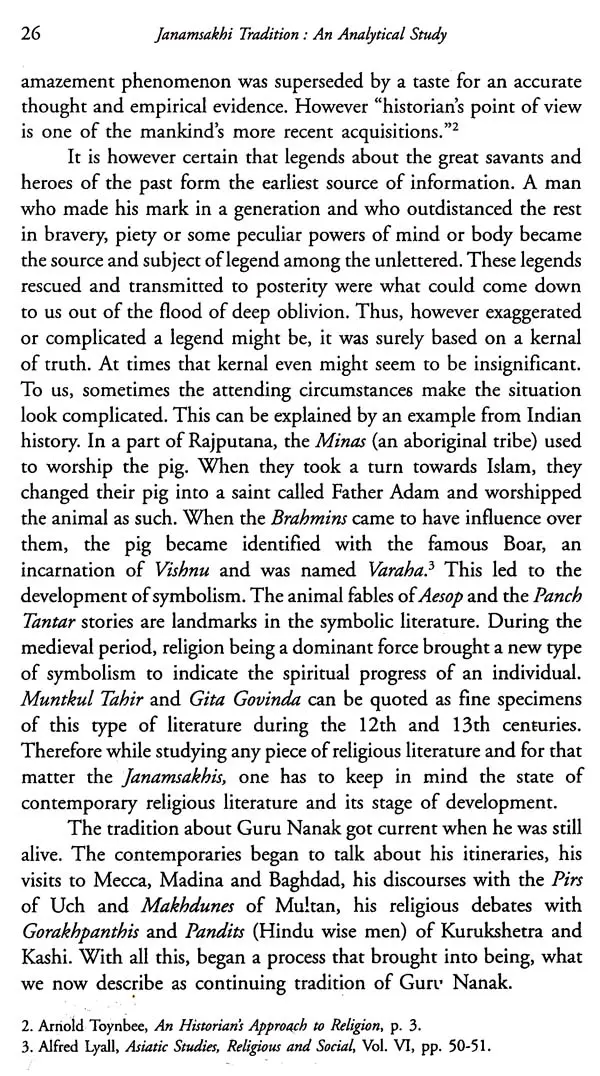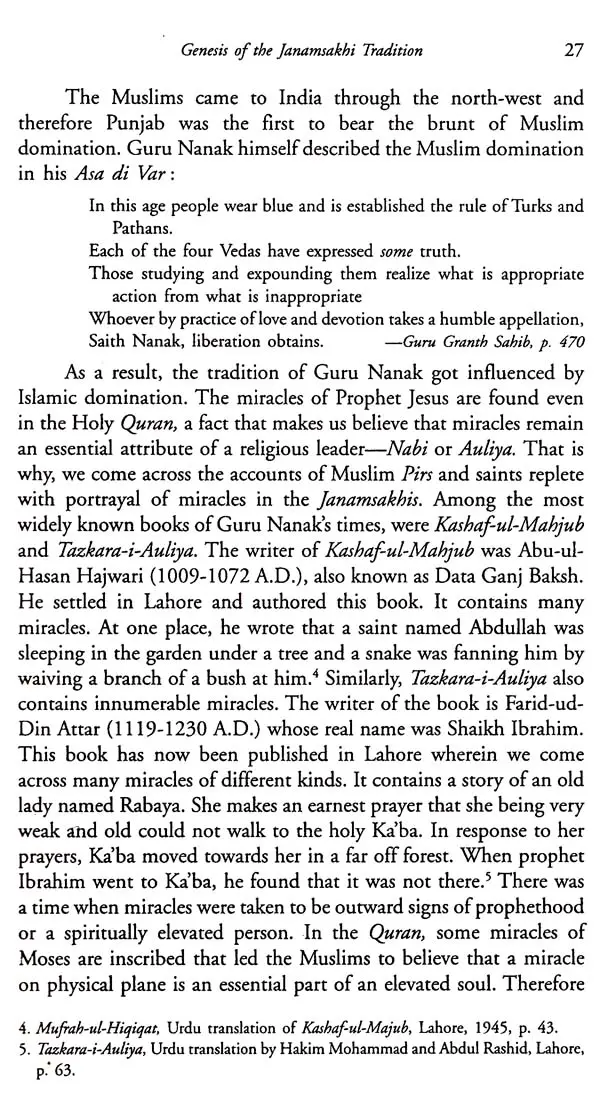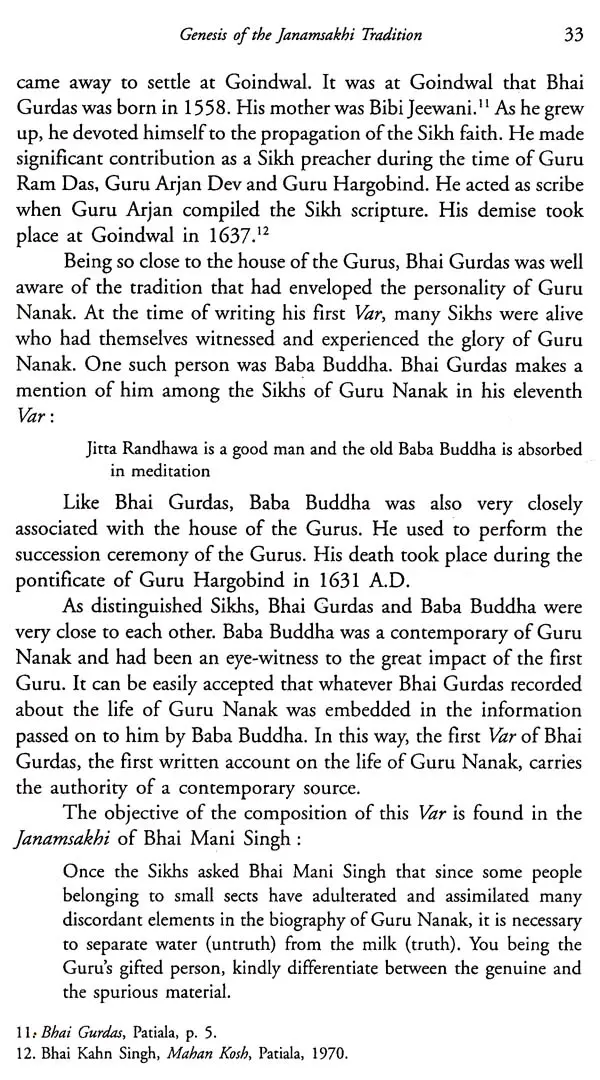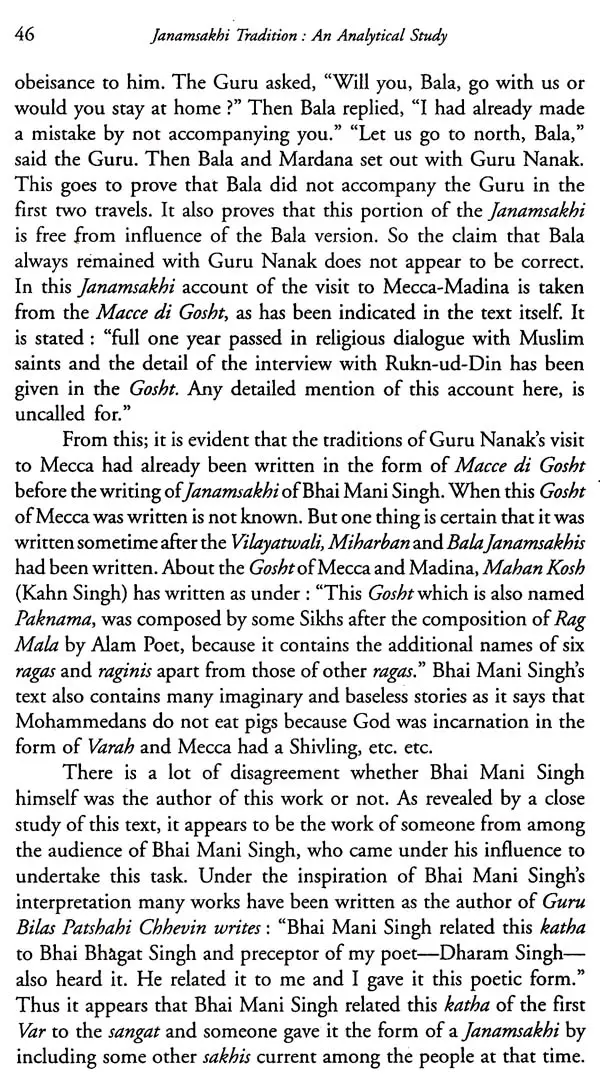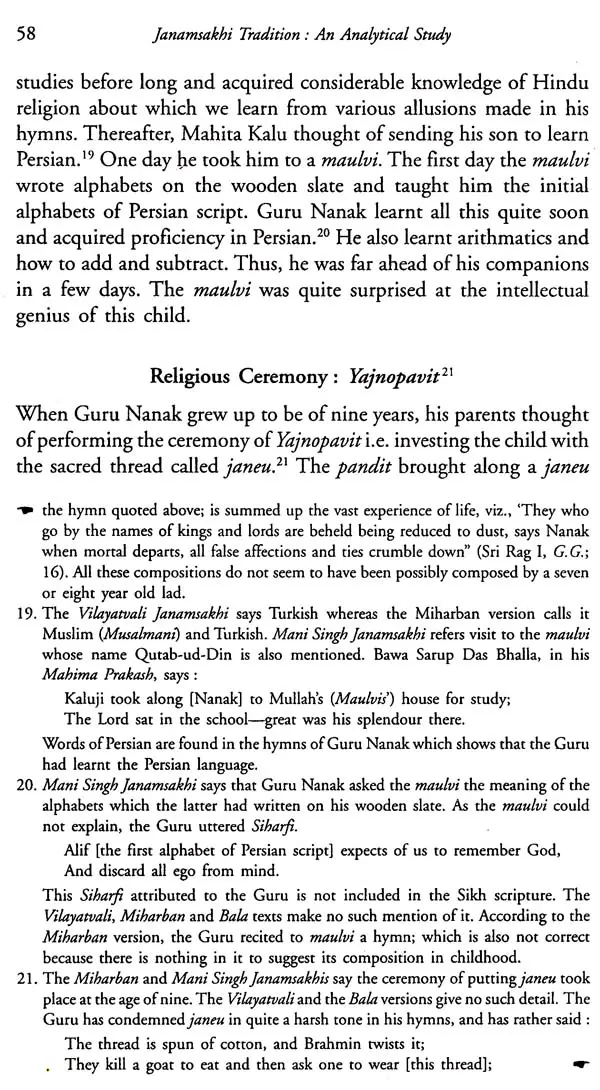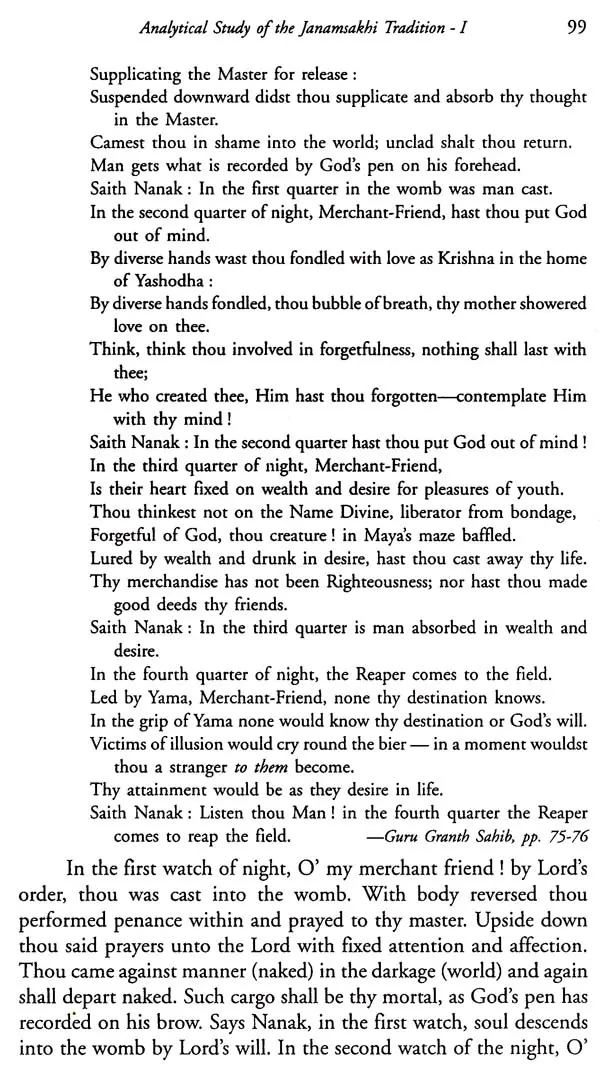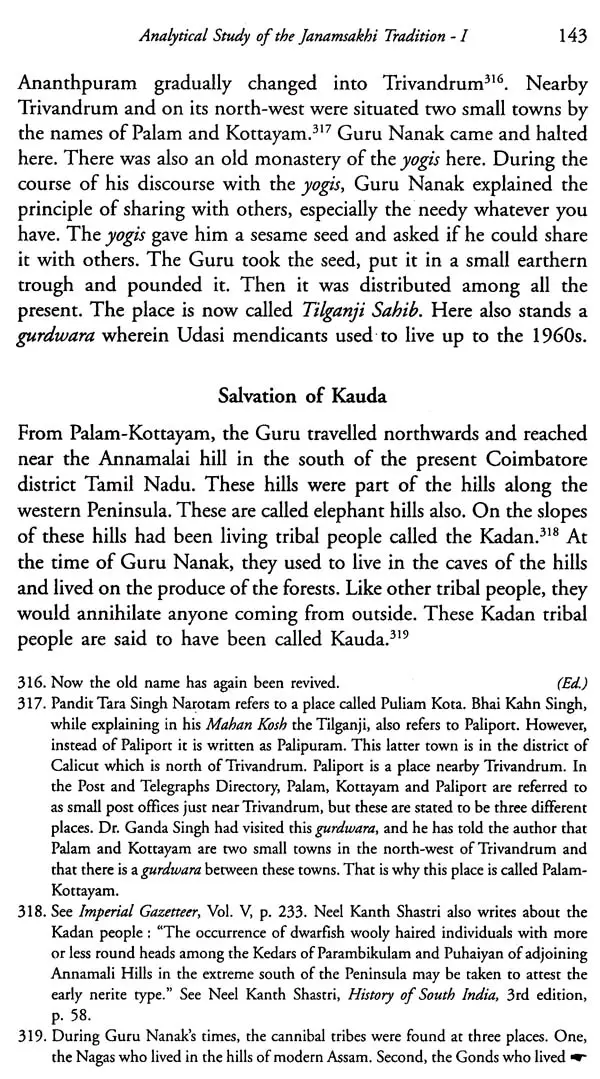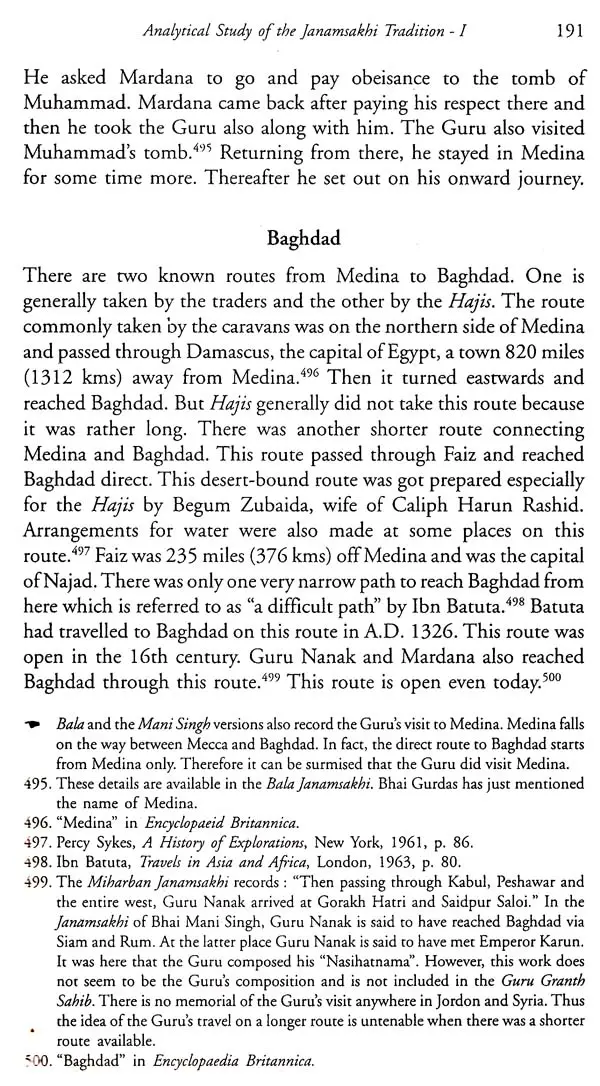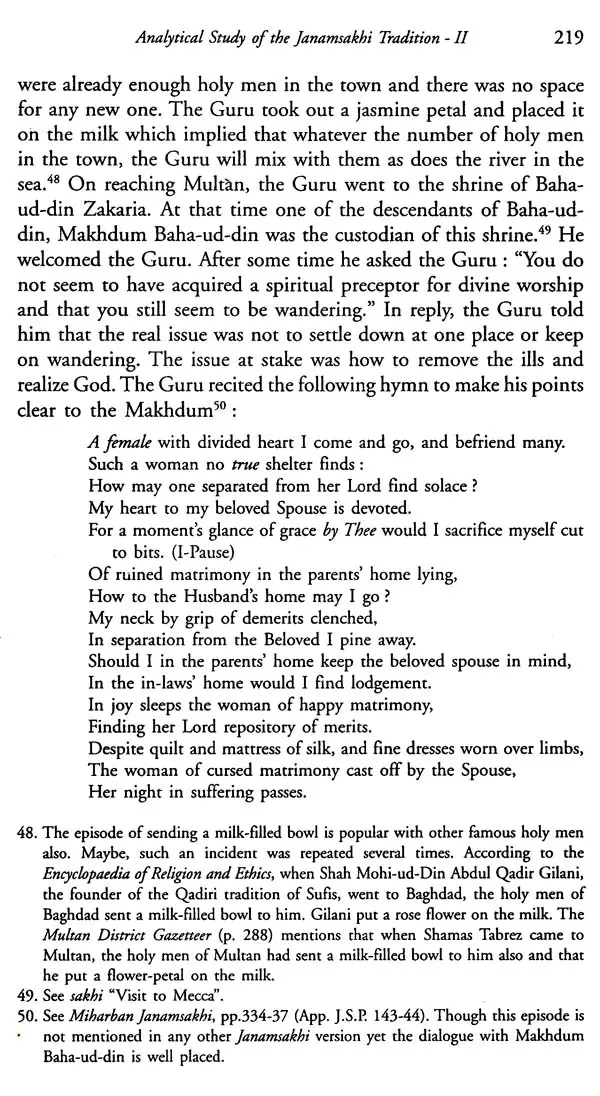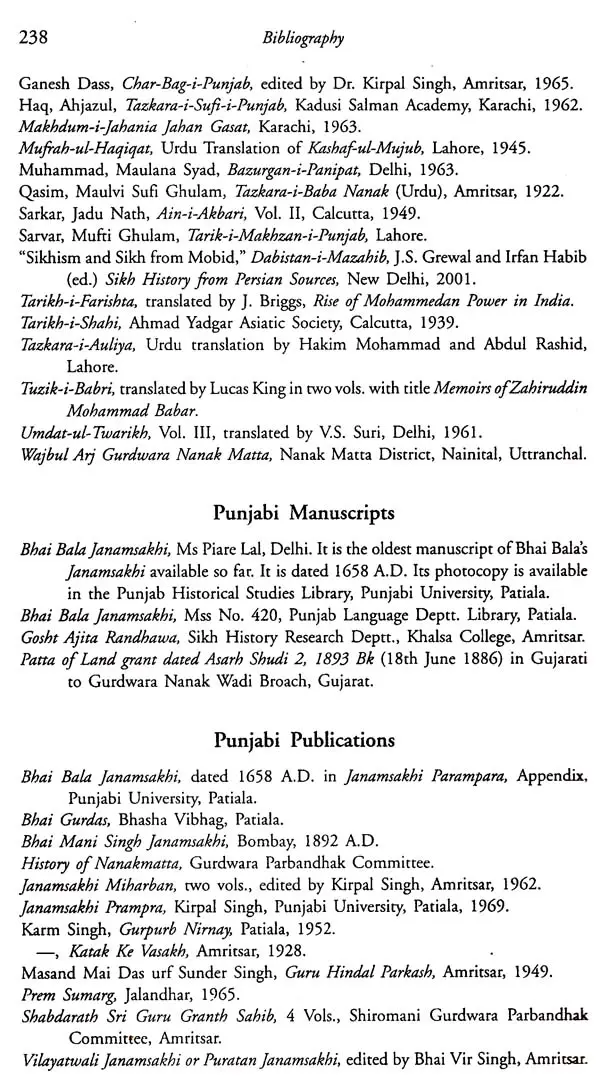
Janamsakhi Tradition- An Analytical Study
Book Specification
| Item Code: | UAZ723 |
| Author: | Kirpal Singh |
| Publisher: | Singh Brothers, Amritsar |
| Language: | English |
| Edition: | 2004 |
| ISBN: | 8172053118 |
| Pages: | 254 |
| Cover: | HARDCOVER |
| Other Details | 8.80 X 5.80 inch |
| Weight | 510 gm |
Book Description
Of late the historical validity of this material has been called to question in the name of methodology. The author analyses the Janamsakhi material extensively and deciphers the historical contents in this tradition. He concludes that the Janamsakhis shall ever remain the most important source of information on Guru Nanak, if these are studied carefully and intensively.
According to R.G. Collingwood, the author of The Idea of History (Pages 240-43), "the historian must in two ways go beyond what his authorities tell him. One is critical way and this is what Bradley has attempted to analyse. The other is the constructive way. Of this he has said nothing, and to this now, I propose to return. I described constructive history as interpolating, between the statements borrowed from our authorities; other statements simply by them. Thus, our authorities tell us that on one day Caesar was in Rome and a later day in Gaul, they tell us nothing about the journey from one place to other, but we interpolate this with a perfect good conscience."
"This act of interpolation has two significant characteristics.
First, it is in no way arbitrary or merely fanciful; it is necessary in Kantian language a priori.... But if our construction involves nothing that is not necessitated by the evidence, it is legitimate historical construction of a kind without which there can be no history at all." "Secondly what is in this way inferred, is essentially something imagined... That is already an example of historical thinking; and it is not otherwise that we find ourselves obliged to imagine Caesar as having travelled from Rome to Gaul when we are told that he was in these different places at these successive times... That the Historian must use his imagination in a common place, to quote Macaulay's Essay on History, a perfect historian mus possess an imagination sufficiently powerful to make his narrative effective and picturesque." Commenting on it Collingwood writes, "but this is to underestimate the part played by the historical imagination which is properly not ornamental but structural. Without it the historian would have no narrative to adorn." "The imagination that 'blind but indispensable faculty, without which. as Kant has shown, we could never perceive the world around us, is indispensable in the same way to history: it is this which operating not capriciously or fancy but in a priori form, does the entire work of historical construction." (p. 241)
At another place Collingwood states, "here and equally in all other kinds of art, a priori imagination is at work. Its other familiar functions what may be called the perceptual imagination supplementing and consolidating the data of perception." But historical imagination is different. For this; following three conditions are essential: 1. Historian's picture must be localized in space and time. 2. "All history must be consistent with itself... there is only historical world, and everything in it must stand in some relation to everything else, even if relation is only topographical and chronological. 3. "It is of utmost importance that historian's picture stands in a peculiar relation to something called evidence." (p. 246) It has been accepted that history is a science as well as an art, 'no more no less'.
Book's Contents and Sample Pages
